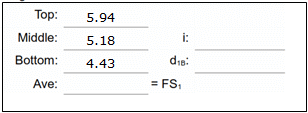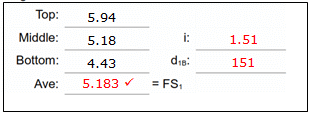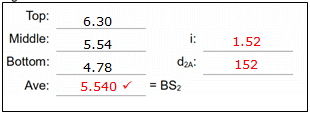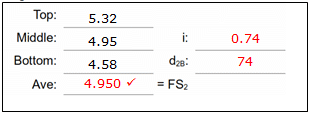d. Collimation Check Example
Instrument used has a stadia multiplier of 100; rod units are feet.
A baseline was laid out with a cloth tape using an interval of approximately 75 feet.
Instrument set up at point 1
Sight rod on A
| Read and record the three crosshairs. |  |
|
Reduced readings: Average should be close to the middle reading, if not, then one or more readings incorrect; re-read. Check: d1A should be approx 75 ft, same as interval. |
 |
It's important to reduce the readings immediately after taking them. The computations help identify if a reading error has been made. If there is an error, the equipment is still in place so the measurements can be quickly redone.
Sight rod on B
| Read and record the three crosshairs. |  |
|
Reduced readings Average should be close to the middle reading, if not, then one or more readings incorrect; re-read. Check: d1B should be approx 150 ft, twice the interval. |
 |
The instrument is moved to Point 2 and the process repeated.
The readings (black) and computations (red) are:
Sight rod on A

Sight rod on B

Compute the error and distance from Equations E-1 and E-4:

A negative error indicates the LoS is below horizontal.

Using Equations E-2 and E-3 express collimation error as a ratio and angle:


-0.0000266 ft/ft is the same as -0.0226 mm/m which means this instrument meets First Order and Second Order standards.